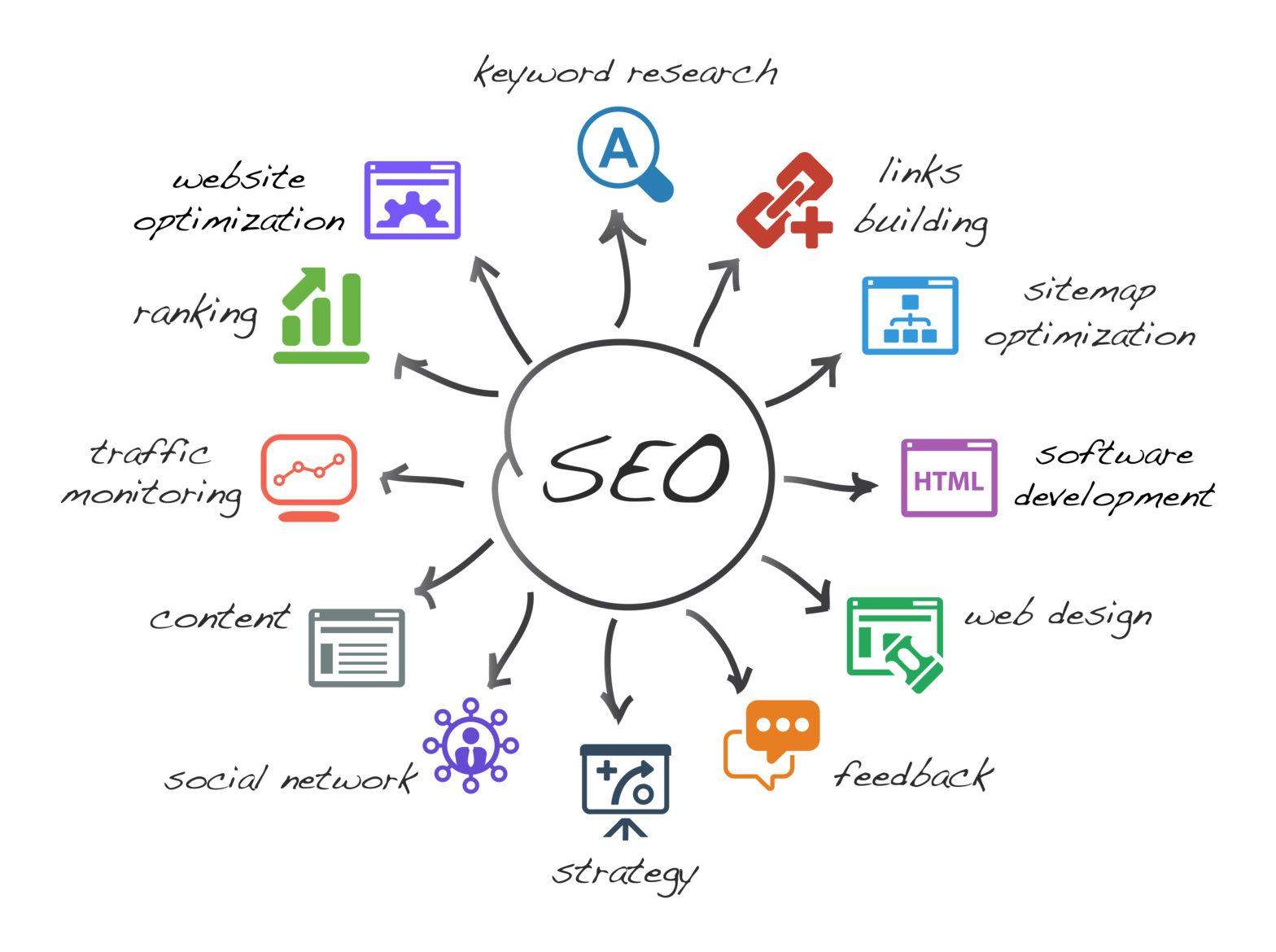In the ever-evolving landscape of digital marketing, staying ahead of the SEO game is more crucial than ever. As we navigate through 2023, the strategies that once drove traffic are transforming, making it essential for marketers, business owners, and content creators to adapt and innovate. In this listicle, we’ll explore four essential SEO optimization strategies that can propel your online presence to new heights this year. Each strategy is designed to enhance visibility, improve user experience, and ultimately, boost conversions. So whether you’re a seasoned SEO expert or just getting started, prepare to equip yourself with practical insights and actionable tips that will set the stage for your success in 2023 and beyond. Let’s dive in!
1) Prioritize Quality Content: In 2023, creating high-quality, engaging, and informative content is more crucial than ever. Focus on providing value to your audience, answering their questions, and solving their problems. Utilize a mix of formats, such as articles, videos, and infographics, to keep your content fresh and appealing
In the competitive landscape of 2023, the demand for high-quality content has skyrocketed. Audiences are increasingly discerning, seeking content that not only informs but also resonates with their needs and interests. To stand out, prioritize creating pieces that provide substantial value. When planning your content strategy, consider incorporating diverse formats to enhance engagement. For instance, blending traditional articles with videos, infographics, and even podcasts can captivate your audience, making complex information more digestible. By addressing the specific questions and concerns of your target demographic, you can establish your brand as a trusted resource.
To better organize your content efforts, you might find it beneficial to use a simple table to track your content types and their performance. This allows you to evaluate which formats resonate the most with your audience, helping refine future content strategies. Here’s a quick breakdown:
| Content Type | Engagement Level | Conversion Potential |
|---|---|---|
| Articles | Moderate | High |
| Videos | High | Moderate |
| Infographics | High | Low |
| Podcasts | Moderate | Moderate |
By analyzing the data from your content performance, you can make well-informed decisions on prioritizing the types of content that truly engage your audience and meet their needs effectively. In this evolving digital realm, adaptability and quality will be your strongest assets.

2) Optimize for User Experience: Search engines increasingly prioritize user experience as a ranking factor. Ensure that your website is mobile-friendly, loads quickly, and has intuitive navigation. A seamless browsing experience encourages longer visits and reduces bounce rates, contributing to improved SEO performance
To elevate your website’s performance in search engine rankings, it’s essential to enhance the user’s journey from the moment they land on your page. Design your site with a mobile-first approach, ensuring it displays beautifully across all devices. A responsive design not only accommodates varying screen sizes but also aligns with Google’s emphasis on mobile usability. Fast loading times are equally paramount; studies show that users are likely to abandon a page that takes longer than three seconds to load. Incorporating optimized images, leveraging browser caching, and minimizing HTTP requests can significantly slingshot your site’s speed.
Additionally, intuitive navigation plays a crucial role in retaining visitors. Utilize a clear menu structure that guides users effortlessly to their destinations – whether it’s a blog post, a product page, or contact information. Include in-context links to encourage exploration without overwhelming visitors. Consider creating a table of contents for longer articles to assist users in finding sections of interest quickly. Below is an example layout for your navigation plan:
| Navigation Element | Purpose |
|---|---|
| Main Menu | Offers a clear path to primary sections |
| Breadcrumbs | Helps users track their location on the site |
| Footer Links | Provides access to essential info and policies |

3) Embrace Voice Search: With the rise of smart speakers and voice-activated devices, optimizing for voice search is essential. Use natural language and long-tail keywords in your content to align with conversational queries. This strategic approach not only caters to voice search users but also enhances your contents relevance for traditional searches
As voice-activated devices like Amazon Echo and Google Home become more prevalent, it’s crucial to adapt your SEO strategies to this new landscape. Voice search fundamentally changes how users interact with search engines, making it imperative to tailor your content accordingly. Focus on natural language and long-tail keywords, which are more likely to mirror the way people speak. This means incorporating phrases that reflect everyday conversations, such as “best Italian restaurants near me” rather than just “Italian restaurants.” By aligning your content with these conversational queries, you’re not just catering to voice search; you’re also improving your relevance for traditional searches.
To effectively optimize for voice search, consider implementing the following strategies:
- Use question-based headings to guide users to the answers they seek.
- Integrate local SEO terms for geographically targeted voice searches.
- Ensure your website has a fast loading speed to accommodate quick queries.
- Utilize schema markup to enhance your chances of appearing in voice search results.
A well-structured site along with relevant, conversational content will not only enhance your voice search rankings but will also play a significant role in keeping your traditional search visibility strong.

4) Leverage Local SEO: In an increasingly digital world, local SEO remains a vital strategy for businesses aiming to attract nearby customers. Optimize your Google My Business listing, gather positive reviews, and create localized content to improve your visibility in local search results. This targeted approach can significantly boost foot traffic and customer engagement
In a world where consumers turn to their smartphones for information, local SEO plays a crucial role in helping businesses connect with potential customers right in their vicinity. Start by optimizing your Google My Business listing to ensure your business appears prominently in local search results. Include essential information such as your address, phone number, and operating hours. Regularly update your listing with high-quality images and posts about events, promotions, or new products to engage your audience. Utilizing local keywords throughout your website and in your listing can further enhance your visibility, ensuring that your business appears at the top of local search results when your target audience is looking for services nearby.
Gathering positive reviews from satisfied customers is another potent tactic to improve your local SEO performance. Encourage your clients to share their experiences on platforms like Google, Yelp, or Facebook. Responding to reviews—not just the positive ones, but also addressing any negative feedback—shows potential customers that you are active and care about their experiences. Additionally, developing localized content can set your business apart. Consider creating blog posts or articles that emphasize local events, partnerships, or community involvement. By weaving local storytelling into your marketing strategy, you can establish a deeper connection with your audience, driving foot traffic and fostering loyalty that online-only businesses struggle to achieve.
In Retrospect
As we wrap up our exploration of the four essential SEO optimization strategies for 2023, it’s clear that adapting to the ever-evolving digital landscape is paramount for success. From harnessing the power of quality content to embracing the intricacies of technical SEO, each strategy plays a vital role in elevating your online presence. Remember, SEO isn’t just a one-time task; it’s an ongoing journey that requires patience, creativity, and a willingness to learn.
Stay curious, experiment boldly, and keep your finger on the pulse of industry trends. With these strategies in your toolkit, you’re well-equipped to navigate the complexities of search engine optimization this year. Here’s to your success in turning clicks into connections and visitors into loyal advocates! Happy optimizing!




